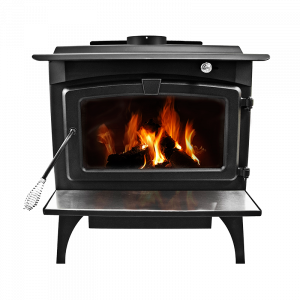Fast Facts
Population 967,000
Elevation 5314 ft. above sea level
Average Annual Rainfall 8-9 inches
Average Humidity 43%
Average Price – Existing Home
Median Age 38 yrs. (2024)
Unemployment Rate 4.90% (2024)
Cost of Living Calculator
New Mexico State Flower - Yucca
New Mexico State Bird - Roadrunner
New Mexico State Tree - Pinon Pine
New Mexico State Gem - Turquoise
New Mexico State Vegetables - Chili and Pinto Beans
New Mexico Nickname - “The Land of Enchantment”
Fun Facts About Albuquerque
-
At an elevation of 5314 feet above sea level, Albuquerque is the highest metropolitan city in the US.
-
Sandia Peak Tramway runs from the base of the Sandia Mountains to their summit called Sandia Peak. It is the longest aerial tramway in North America spanning 2.7 miles.
-
Sandia Peak’s elevation is 13,378 feet above sea level and offers panoramic view of more than 11,000 square miles.
-
Over 2/3 of New Mexico’s land mass is government owned and protected.
-
The University of New Mexico is widely recognized for it’s departments of Medicine, Law and Electrical Engineering.
-
At Albuquerque’s Central New Mexico Community College students can receive a higher education in many computer based, medical based, business based and trade based occupations.
-
Albuquerque is the home of Ben Abruzzo, Larry Newman and the late Maxie Anderson, the three pilots of the world famous “Double Eagle II” — the first manned balloon to cross the Atlantic.
-
According to weather bureau records going back over 50 years, Albuquerque receives 77% of all available sunshine.
-
Cochiti Dam and Reservoir located 45 miles northwest of Albuquerque is a wakeless lake offering wind sailing, fishing and other recreational facilities.
-
Albuquerque is the home of racing greats, Bobby and Al Unser and Al Unser, Jr.
-
Every October Albuquerque is host to the world class Albuquerque International Balloon Fiesta in which over 800 hot air balloons participate.
-
Two major interstate highways intersect at almost the center of the city. The intersection of I-25 and I-40 is locally known as “The Big I”.
-
The University of New Mexico in Albuquerque educates more than 25,000 annually and boasts the most unusual architecture of any college campus in America, integrating traditional Pueblo as well as ultramodern design.
-
Albuquerque is home to the Albuquerque Isotopes, our minor league baseball team. The Isotopes play in Albuquerque’s baseball stadium, Isotopes Park.
-
Albuquerque has an excellent system of hospitals including: The Heart Hospital, Carrie Tingley Children’s Hospital, The Albuquerque Regional Medical Center, Lovelace Hospital, Presbyterian Hospital, The Regional Veterans Hospital, and The UNM Hospital/Medical Center.
-
Albuquerque utilizes water conservation practices to preserve the city’s underground aquifer water supply.
-
The largest lake in the state, Elephant Butte, is 150 miles south of Albuquerque. It has more than 240 miles of shoreline and provides boating, water skiing, marinas, fishing and other water sports to Albuquerque residents.
-
Kirtland Air Force Base and Sandia National Laboratories are located on the SE side of town. Kirtland is the 6th largest Air Force Base in the US and Sandia Laboratories is famous for extensive research and development projects.
-
Albuquerque has more than 172 city parks and a complete system of hiking and biking trails.
-
The UNM Lobos athletic teams have been consistent leaders in college sports and draw a large following to their competitions in the University’s well designed facilities.
Burn/No-Burn
Because we are pollution conscious in Albuquerque, the city has set in place air quality standards which regulate which nights/days you can burn your wood burning fireplaces. The City monitors weather and atmospheric conditions to determine on a daily basis whether it will be a “burn” or “no-burn” night. The regulated season is roughly from October through March.
All of the local newpapers, radio and TV stations will tell you which advisory has been posted for the day. To double check, you can call 768-BURN or check Today’s Burn/No Burn Status for the latest information.
Things to Consider
Albuquerque is about 5000 feet above sea level, so it might take a day or two for you to adjust if you are not used to high altitude.
Bring a good pair of sunglasses and some sunscreen. Again, because of the high altitude, the UV rays are stronger here.
Your car will need a little TLC in a high, dry climate. Get your car tuned as soon as you can so that it, too, can adjust.
The Sandia Mountains are east of the city, so you can always orient yourself by finding them. There are only two main freeways: I-25 runs north and south — I-40 runs east and west.
You can make a right hand turn on red in New Mexico.
There are two main streets that change names on you as they pass from the NE part of the city to the NW. They are: Montgomery (NE) to Montano (NW) Comanche (NE) to Griegos (NW) Another main street runs north and south then makes a 90 degree turn to the west. As it turns west, the name changes. That street is: San Mateo (N/S) changes to Osuna (E/W)




